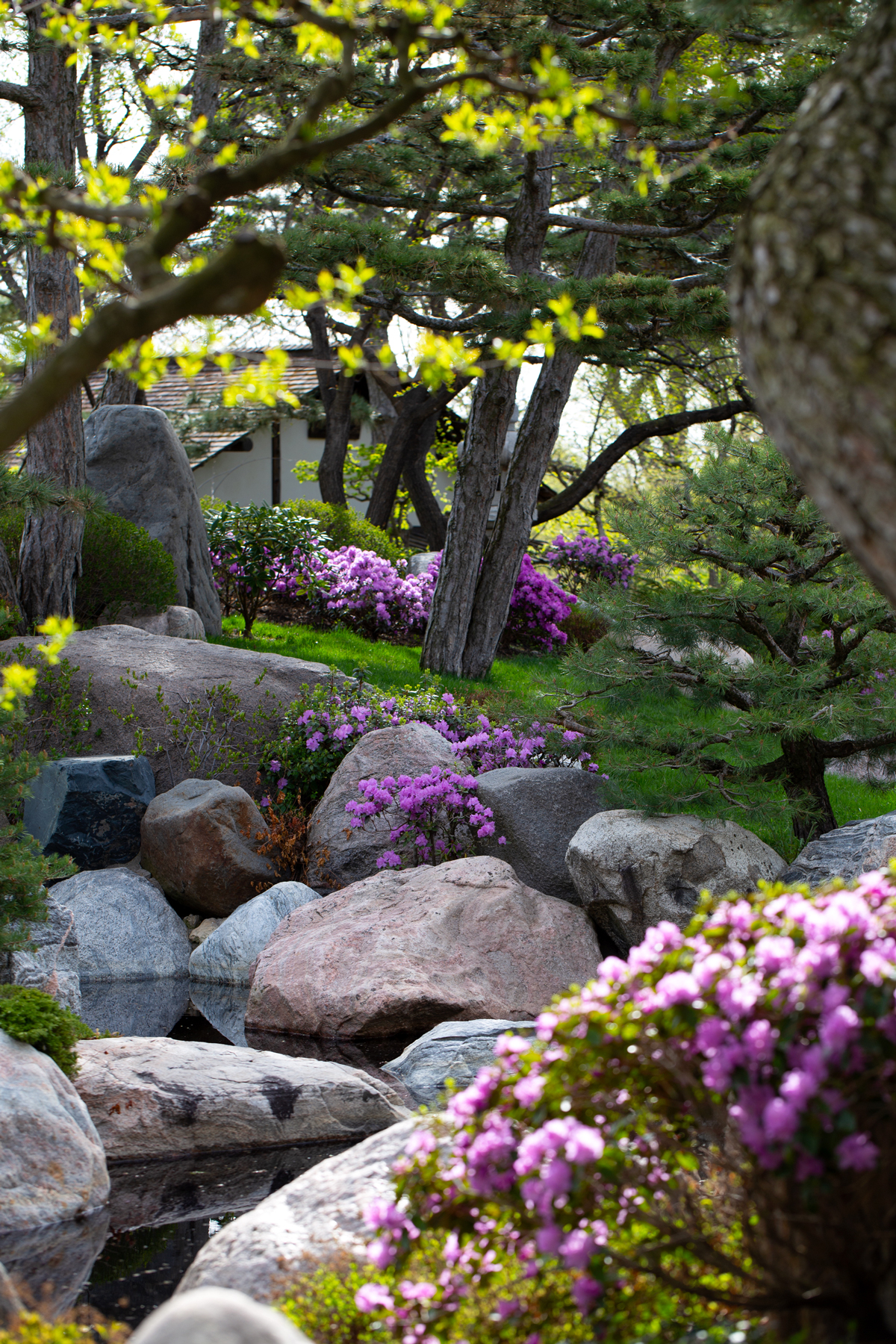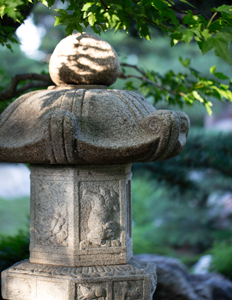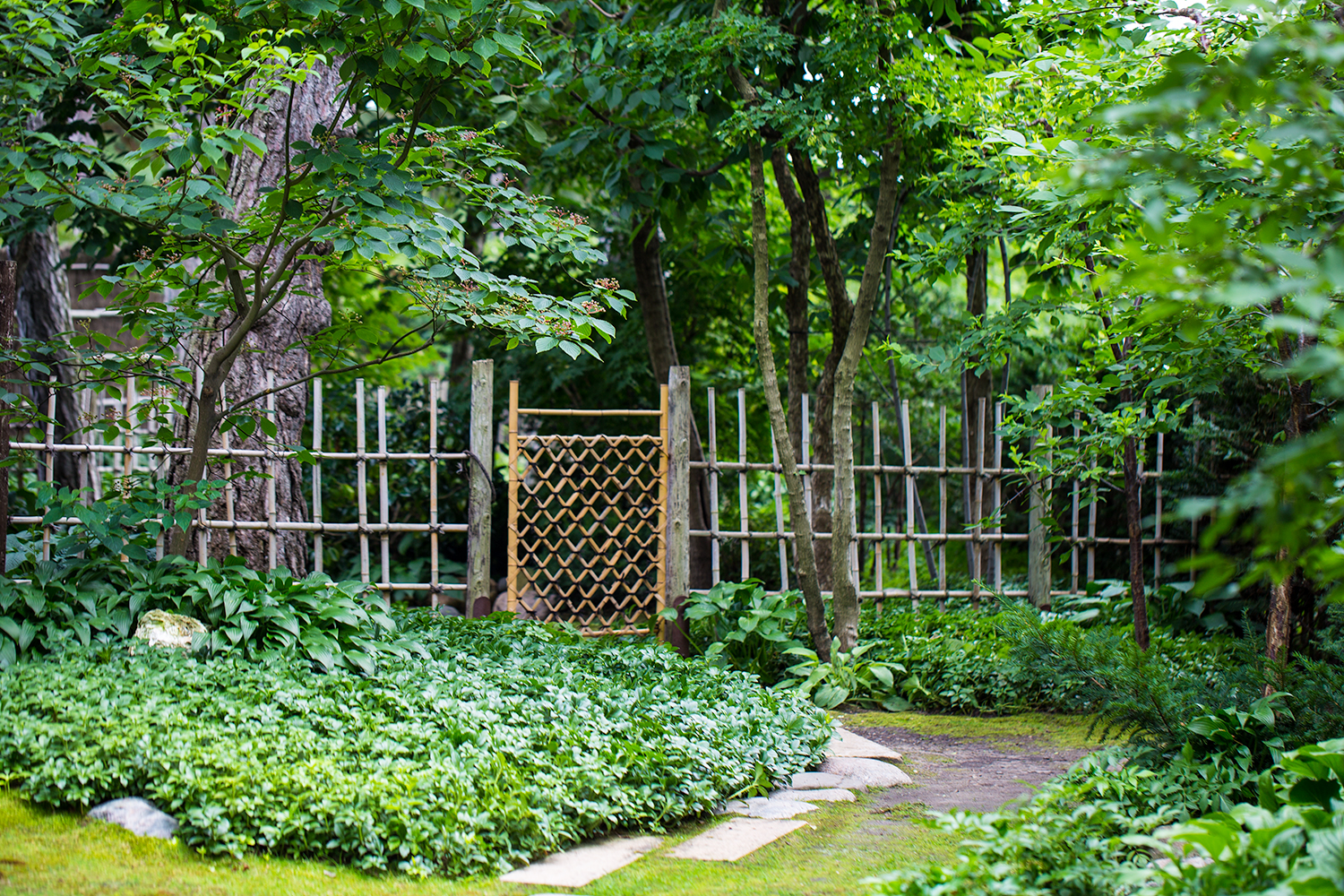Already one of the most beautiful and contemplative corners of Como, the Charlotte Partridge Ordway Japanese Garden has been transformed by recent renovations that have made it a “rising star” among North America’s public Japanese gardens. The garden was the focal point for Como Friends’ 2020 all-virtual Sunset Affair, which marked the garden’s 40th anniversary—a milestone that’s even more meaningful if you know the garden’s long and winding history.
“All gardens wax and wane, depending on the times, the environmental conditions, the type of care and even the economy,” says former Como Horticultural Curator Tina Dombrowski. “But if they’re cherished and loved by the right group of people, a garden can become the heartbeat of a community. When a garden like this inspires the support of gardeners, caretakers and the local community, it can recover even stronger.” Here’s a look at how deep-rooted community connections and thoughtful cultural exchange have helped the Charlotte Partridge Ordway Japanese Garden grow.
Meet Me at the Fair: In 1904, Dr. Rudolph Schiffman, one of the original members of the St. Paul Park Board, traveled to St. Louis for the Louisiana Purchase Exposition, and was so captivated by the Japanese exhibit that he persuaded Como Park supervisor Frederick Nussbaumer to create a Japanese-style garden on St. Paul’s Cozy Lake in Como Park the following year. Created with plant material that Schiffman purchased from Yukio Ishikawa at the fair, Como’s very first Japanese garden never took to the Minnesota climate and was closed within a few years. But the tea lanterns he brought back from the World’s Fair have endured, and guide the way for visitors in Como’s present-day garden.
“But if they’re cherished and loved by the right group of people, a garden can become the heartbeat of a community. When a garden like this inspires the support of gardeners, caretakers and the local community, it can recover even stronger.” –Tina Dombrowski, former Head Horticultural Curator
Lost in Translation: St. Paul and its sister city of Nagasaki, Japan have a relationship that goes back to the early 50s—even before President Eisenhower launched the sister city programs to promote international friendship and cultural exchange. In 1977, the Nagasaki delegation gifted St. Paul with a watercolor plan for a chisen-kaiyu (strolling pond) garden to be built at Como. But the aesthetic nuances of the Edo-period garden were quickly lost in translation when parks crews moved ahead with the work prior to the arrival of designer Masami Matsuda, a ninth generation landscape architect. Soon, Minnesota’s harsh winters cracked the lining of the reflective pool, visitors straying from the paths damaged the plants, and a recession forced the city to close the garden.
Happy Faces: Volunteers have always played an important role in the Japanese Garden, never more so than when a group of community gardeners and Como docents reached out to Matsuda-san and the Japanese delegation asking for their help in fixing the mistakes made during the garden’s initial construction, and learning more about the precise care and maintenance Japanese gardens require. Private fundraising helped to bring Matsuda-san back to St. Paul in the late 80s for a series of renovations, including a massive effort to reorient many of the river boulders around the pond to reveal what Matsuda described as each stone’s “happy face.” “Finding and placing each stone was a small drama,” retired Como horticulturist Joan Murphy remembers, noting that Matsuda and his assistant spent hours staring at each boulder and waiting for each to “speak” while work crews with shovels and cranes stood at attention. Their patience paid off with a more harmonious garden design, and a healthy rapport between the St. Paul and Nagasaki delegation, which came to celebrate the construction of the tea house and the garden’s reopening in 1992.
Where Everyone Is Equal: Designed to mimic a rustic and simple 16th century Japanese farm house, Como’s sukiya-style tea house embodies a Japanese aesthetic known as wabi sabi—a belief that transience, time, impermanence and imperfection add beauty to an object. Though the front doors of the tea house were enlarged from the original design of 5 foot 2 inches to 6 foot 7 to meet local codes, guests actually enter through a small square crawl-through door known as the nijiri-guchi. Bowing before entering is not just a physical requirement—it also signifies that all the guests of the tea house are equal.
Looking Back, Looking Forward: With the construction of The Ordway Gardens in 2013, attention turned to renovating the Japanese Garden for the next generation. Como Friends provided the funding to invite international Japanese garden expert John Powell to begin reimagining the garden with an eye toward the new vantage points created by the Huss Terrace, as well as the original design goals of Masami Matsuda. Over the last several years, Como’s horticultural staff have worked closely with Powell to prune overgrown trees, bring in new plant material, and create a more harmonious pathway through the garden. The latest improvement, a pine grove path that leads visitors out of the tea garden, has brought these renovations full circle. No longer will visitors have to double back on the garden’s pathways, a renovation that helps heighten the sense of solitude, spacial intimacy and contemplation the garden is designed to inspire.
What’s New: With support from Como Friends, the Marjorie McNeely Conservatory has added another new feature to the Japanese garden experience at Como. The Huelsmann Meditative Garden is a traditional karesansui garden of raked sand and rock that highlights the concept of yohaku-no-bi, or the beauty of blank space.
Story originally published July 2, 2020
DID YOU KNOW?
- Como Friends’ support has been essential to the growth of the Marjorie McNeely Conservatory’s Japanese horticultural collection, providing 100 percent of the funding for The Ordway Gardens wing opened in 2013.
- Louis W. Hill, Jr., grandson of railroad executive James J. Hill, is credited with starting St. Paul’s “town affiliation” with Nagasaki. A fan of Asian art, Hill had been to Nagasaki before World War II.
- The Obon Festival, the high-point of the Japanese garden’s summer season, is on August 21, 2022.



